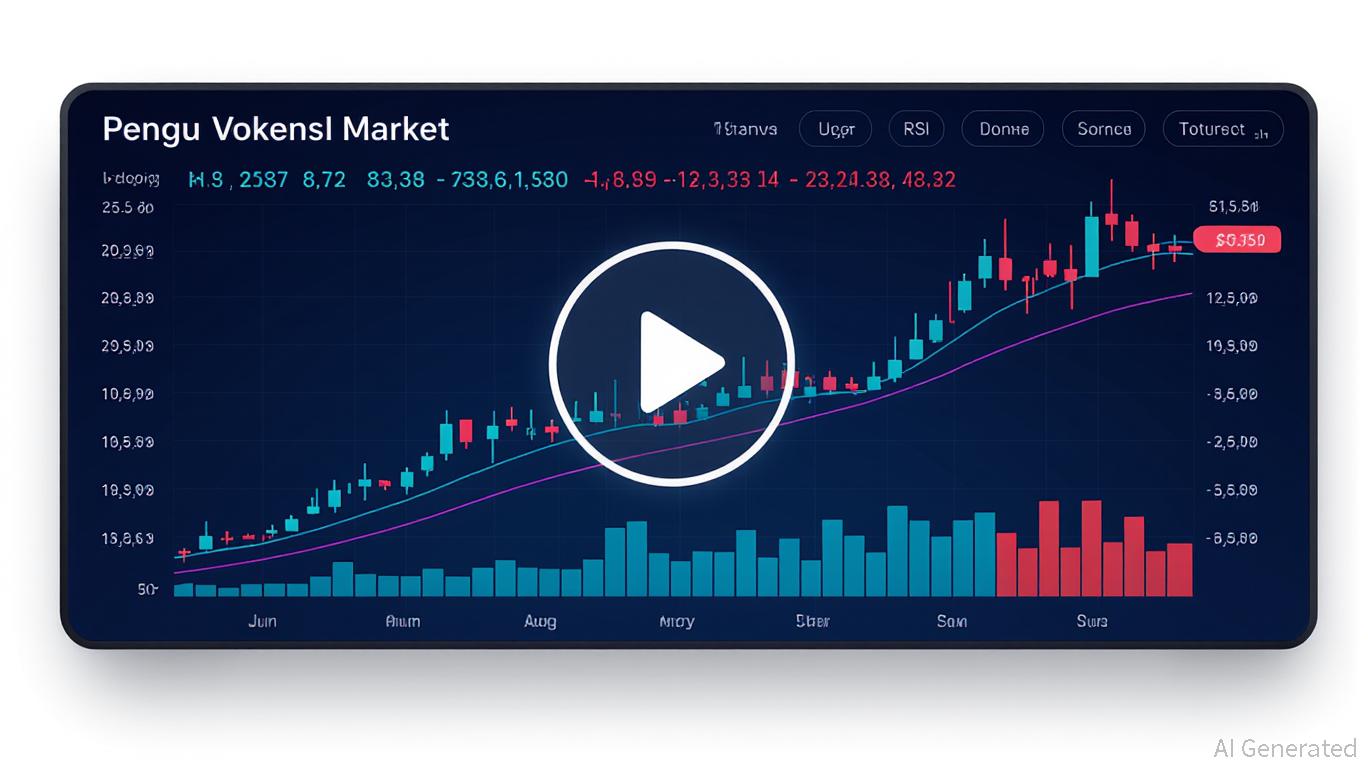Tether’s $500 Billion Bet: Growth Fueled by Regulation or Hidden Motives?
- Tether projects $15B 2025 net profit (99% margin) and explores $500B valuation via Cantor Fitzgerald-led fundraising. - Dominates $316B stablecoin market with $182B USDT circulation, plans U.S. launch of regulated USAT via Anchorage Digital. - Faces transparency scrutiny despite $127B Treasury reserves and $41M CFTC fines, lacks Big Four audit for reserves. - Expands into AI, energy, and tokenized assets via Plasma blockchain, aiming tech conglomerate transformation. - Balancing U.S. GENIUS Act complianc
Tether, the company behind the world's most widely used stablecoin
The anticipated $15 billion profit in 2025 follows a $13 billion gain in 2024, largely attributed to Tether's $127 billion in U.S. Treasury assets. Ardoino has highlighted the company's focus on strategic reserves, investing in areas such as artificial intelligence and energy, while also expanding into regulated markets. The U.S. debut of USAT, to be managed by Anchorage Digital and supported by Cantor Fitzgerald, aims to attract 100 million American users by December, leveraging platforms like Rumble, where Tether has already invested $775 million. This initiative aligns with the GENIUS Act's regulatory standards, marking a shift toward formal compliance after years of offshore operations.
Despite its strong financial performance, Tether continues to face questions about its transparency. The company provides quarterly reserve attestations from BDO Italia but has not yet completed an audit by one of the Big Four firms. Previous regulatory actions, such as a $41 million fine from the CFTC, highlight persistent risks. Detractors argue that Tether's lack of transparency stands in contrast to its significant market role, which includes enabling cross-border payments in developing countries and acting as a settlement mechanism for global crypto trades, as mentioned in a
A planned $20 billion capital raise, with Cantor Fitzgerald as advisor, could put Tether's valuation at $500 billion—on par with companies like SpaceX and OpenAI. Ardoino has dismissed skepticism, describing the valuation as "very cheap," according to
Tether's goals now reach beyond stablecoins. The company has restructured into divisions that focus on energy, data analytics, and education, with the aim of becoming a broad-based technology holding group. Its
As Tether faces both regulatory and reputational hurdles, its path mirrors the wider integration of crypto into mainstream finance. With USAT set to enter a U.S. market shaped by the GENIUS Act and MiCA in Europe, Tether's ability to balance innovation with regulatory demands will be crucial for its future. For now, Tether stands as a key indicator of both the promise and the challenges within the crypto industry.
Disclaimer: The content of this article solely reflects the author's opinion and does not represent the platform in any capacity. This article is not intended to serve as a reference for making investment decisions.
You may also like
Moonbirds to launch BIRB token in early Q1 2026

Aligning Universities with Emerging Industries: The Critical Need for STEM Investment
- Global industries demand AI, renewable energy, and biotech skills faster than traditional education systems can supply, creating a critical skills gap. - Universities like MIT and Stanford are embedding AI across STEM curricula while industry partnerships accelerate hands-on training in automation and biomanufacturing. - Renewable energy programs with apprenticeships and public-private funding are addressing talent shortages as $386B global investments outpace workforce readiness. - Biotech's fragmented

PENGU Token Value Soars: Blockchain Data and Institutional Interest Indicate Optimal Timing for Investment
- PENGU ranks #81 with $706.5M market cap, showing rising institutional interest and whale accumulation. - The pending Canary PENGU ETF, if approved, could unlock institutional capital by including NFTs in a U.S. ETF. - Mixed on-chain signals (RSI 38.7, OBV growth) and 2B tokens moved from team wallets highlight uncertainty. - Partnerships with Care Bears and Lufthansa, plus Bitso collaboration, expand utility but face regulatory risks. - Recent 8.55% price rebound and 2.6% gain post-BNB listing suggest ca

Evaluating How the COAI Token Scandal Influences Cryptocurrency Regulatory Policies
- COAI Token's 88% price crash and $116.8M loss exposed systemic risks in centralized AI-DeFi projects with opaque governance. - Global regulators responded with stricter frameworks, including EU's MiCA and Singapore's asset freezes, to address jurisdictional gaps. - Institutional investors now prioritize compliance, with 55% of hedge funds allocating to digital assets via tokenized structures in 2025. - Emerging solutions include AI-driven risk platforms and anthropological governance models to enhance tr
